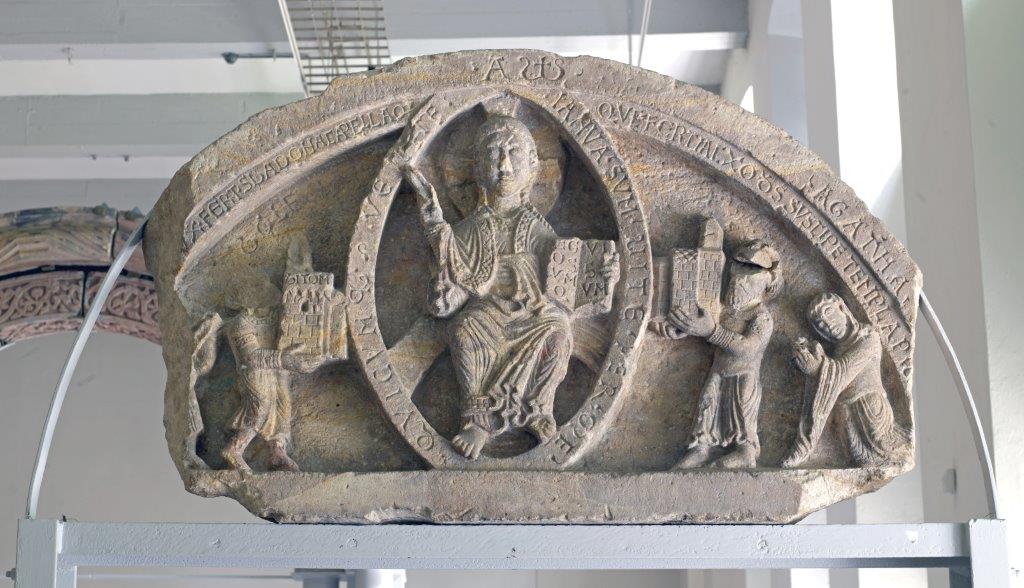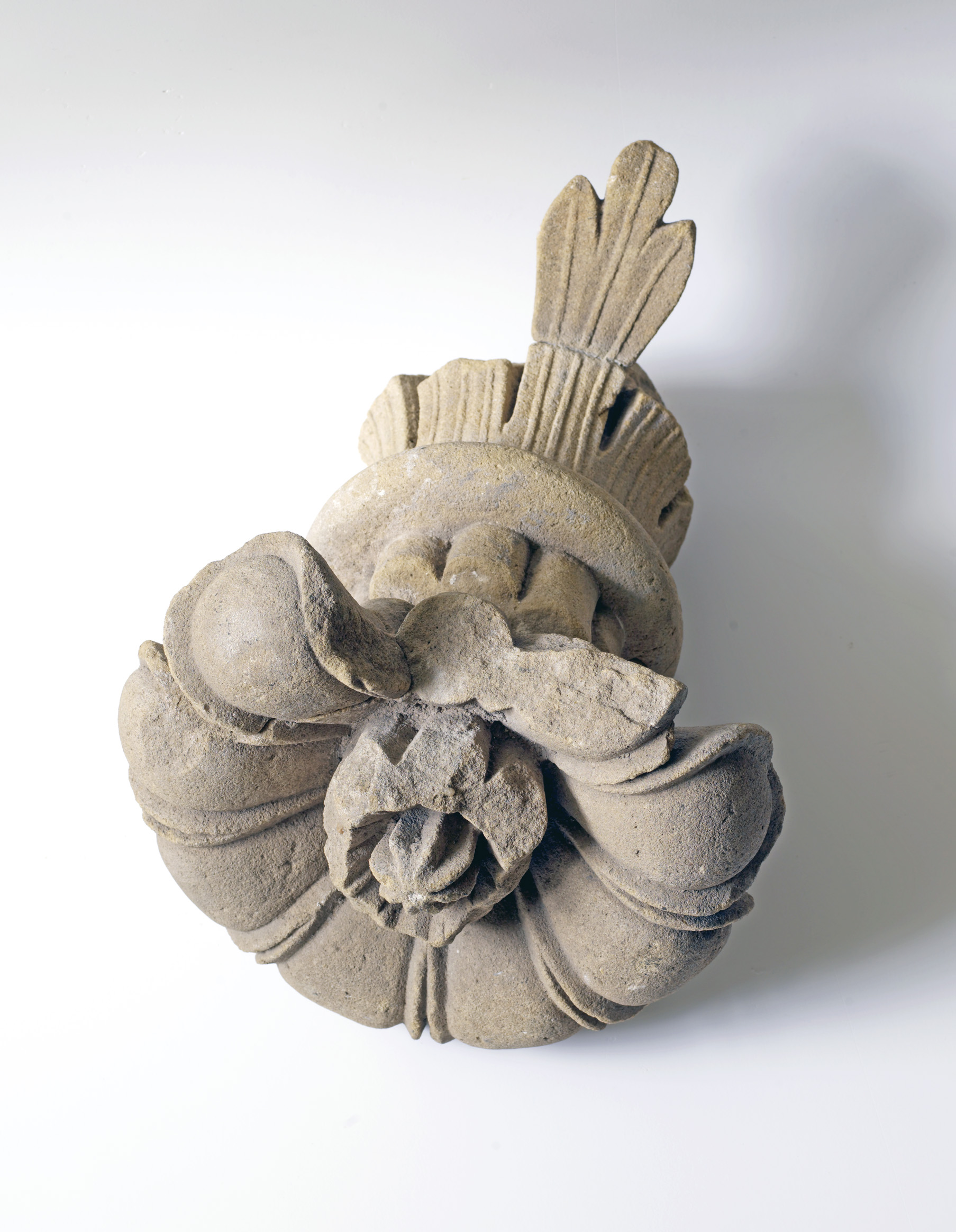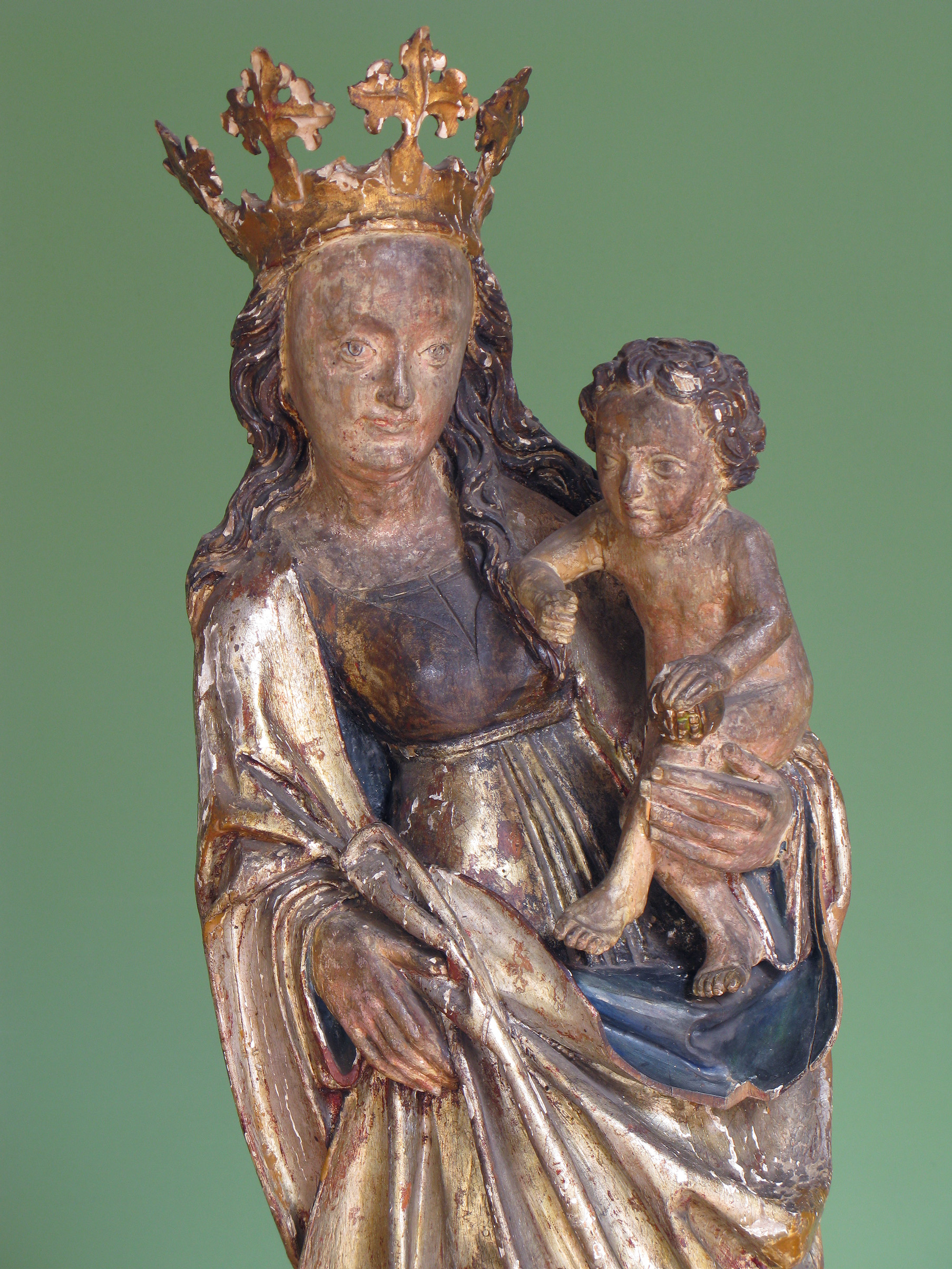DEPARTMENT OF MEDIEVAL ARCHITECTURE
Collection of the department of medieval architecture, although not large (currently it consists of about 200 exhibits), due to the value of the gathered artistic and historical items is an important part of the collection of the Museum of Architecture.
The largest group of exhibits consists of stone and architectural details, created in Silesia from the twelfth to the early sixteenth century. These are artifacts of great historical and cognitive value, as most of them come from buildings that don’t exist anymore, often important for the development of Silesian architecture. Among them are both outstanding works that stand out artistically, and mediocre craft. Especially valuable are Romanesque relics from the Augustinian Parish Church of St. Mary on the Sand, and the Benedictine abbey in Ołbin, Wroclaw.

Jaksa Tympanum, St. Archangel Michael chapel in Ołbin, Wroclaw, c. 1160-1163
The most valuable exhibit of the Romanesque architectural sculpture in the Museum of Architecture is the Jaksa Tympanum (c. 1160-1163) from St. Archangel Michael chapel in Ołbin. High artistic value of the monument and rich iconographic program allow to treat it as one of the top monuments of Romanesque art in Poland.

Keystone, St. Benedict and Lawrence castle church in Legnica, c. 1230
Elements of Gothic stonework do not present such a compact group as the previously mentioned Romanesque details. Some of the most interesting exhibits in this group are represented by portal elements from Wroclaw tenements: a tympanum with a Veraicon from the house at 16 Ofiar Oświęcimskich Street and the accompanying figure of Archangel Gabriel (2nd half of the fourteenth century), a figure of a woman kneeling on a male footrest (ca. 1380)and an lintel from the butchers’ guild inn (c. 1500). The Museum of Architecture collection also includes other details from Wroclaw tenements: a bay window from the nursing home at St. Mary Magdalene church (1496) and two relief panels from a bay window of the parish house at St. Mary Magdalene church (1494).
Two Gothic wooden sculptures are unique in the collection of the Museum of Architecture. The first of them, presenting the Risen Christ (2nd half of the fifteenth century), comes from the hospital of the Holy Sepulchre in Wroclaw. The provenance of the other sculpture, depicting the Madonna and the Child, is not known. It belongs to the type of Beautiful Madonnas, popular in Silesia and the Czech Republic.

Madonna and Child, Silesia, first quarter of the fifteenth century
Arts and crafts occupy an important place in the department of medieval architecture, representatives of this group used to be elements of interior design. The most valuable items in this category constitute stained glass windows, including Romanesque stained glass from the turn of the twelfth and thirteenth century with the image of the prophet Ezekiel, extremely rare in Polish collections. Moreover, the collection includes two artistically valuable fourteenth-century quarters from southern Germany, with Nativity and Presentation in the Temple scenes, a quarter with Nativity scene (Germany, the turn of the thirteenth and fourteenth century), as well as fragments of two late Gothic, ornamental stained-glass windows.

The collection also includes two wooden ceilings and a unique set of architectural ceramics, including both structural (bricks, rib fittings) and decorative elements (flooring, wall coverings, friezes) made from burnt clay. Particularly noteworthy are products of Cistercian and Dominican workshops: a set of thirteenth century Romanesque floor tiles from the Cistercian monastery in Trzebnica, a fragment of an arcade frieze from St. Adalbert church in Wroclaw and a segment of a slightly earlier (1230s) frieze forming a set of antithetically positioned lions, coming from the same church.
Medieval artwork is represented in the collection by woodcuts with city panoramas (Wroclaw, Ulm, Genoa and Rome), taken from the famous Book of Chronicles (Liber Chronicarum) by Hartmann Schedel (published in Nuremberg in 1493). All woodcuts were created in Michael Wolgemut’s workshop and the drawing for the Wroclaw view was made by Wilhelm Pleydenwurf.

The collection is complemented by models (including a model of the cathedral in Ulm by Julius Niekieli, 1929) and relics documenting ancient construction techniques (bricks, tiles, rib fittings, vaulted ceilings, medieval boxes for transporting mortar), collected in a separate Department of Technology.




